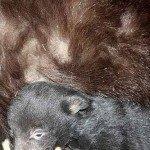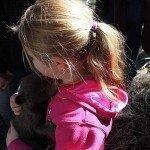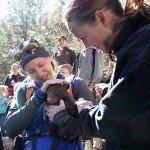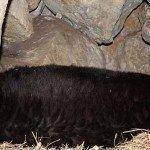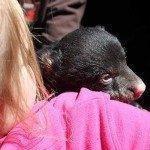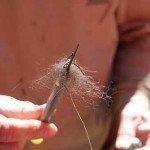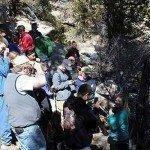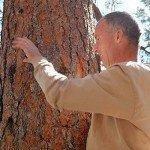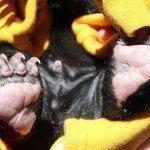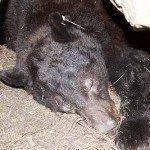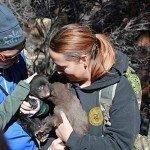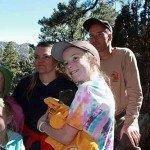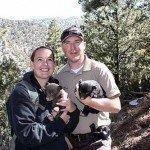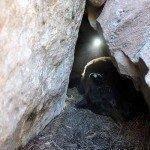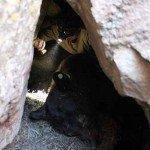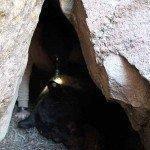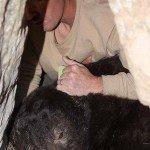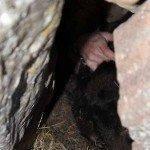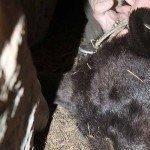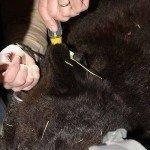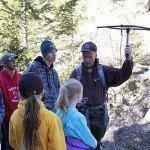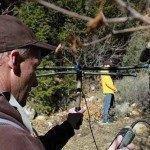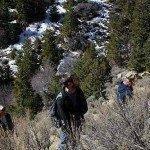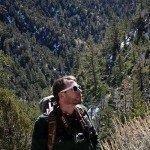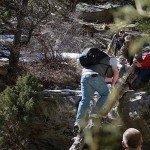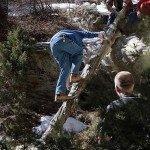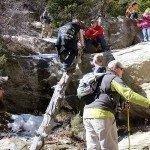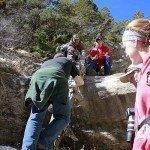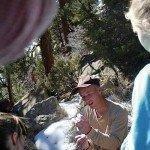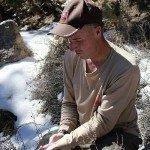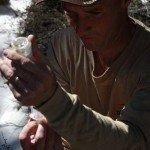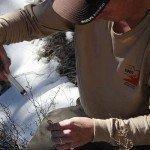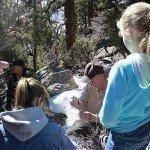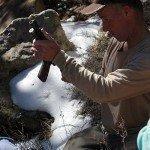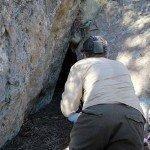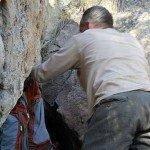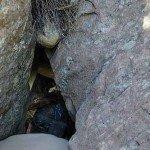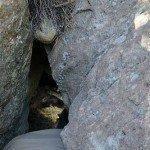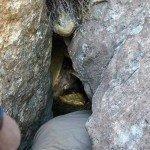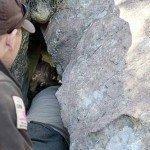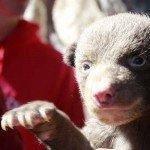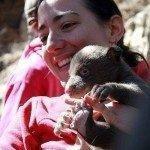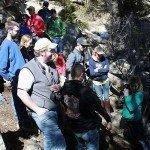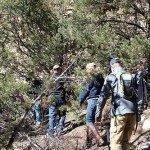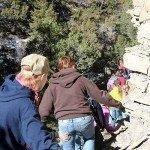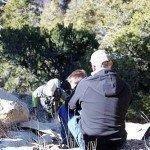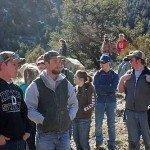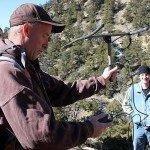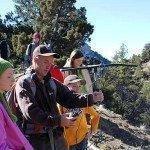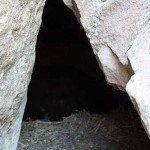Starting in late winter, a dedicated group from the Utah Division of Wildlife Resources begins their yearly version of home visiting. They trek into the cliffs and mountains that surround the state to peek into a number of bear dens to see how the population is doing.
In the area surrounding Carbon, Emery and Grand counties, there are approximately 10 female bears (sows) that are collared and tracked by the DWR. Wildlife biologist Brad Crompton oversees much of the tracking and tagging of these bears. He explained that the focus on tracking is for the sustainability of the population.
There is no way to accurately count the black bear population in the area. The black bear species actually defines the type of bear that is found in Utah, but their colors may range from black to grey, ginger or brown and all shades in between.
Crompton said that during most seasons, bears remain elusive and avoid human contact. The interaction with humans does increase during times of stress such as extended drought when food is scarce. Last year, there was not any bad bear behavior reported in the area despite the dryer than normal conditions. The San Juan area had two bears that were relocated due to conflicts.
The tracking program focuses on female bears and their cubs to gain an estimate on the health of the local population. Healthy sows usually give birth every other year. The cubs will be born during the winter while she is in semi-hibernation. They will remain with her all summer. During the following winter she will hibernate with her yearlings, but sometime after they awaken in the spring, those cubs will leave to find their own space.
When the bears first come out from their winter slumber, they look to eat grass, leaves and anything green. During the summer, they become more opportunistic and eat small rodents, bugs and other protein. This is when they are found rolling logs to get at insects. By late summer and early fall, they are almost an eating machine as they forage berries and nuts to be able to make it through winter.
Crompton led a group of USU Eastern students from the Price and Vernal campuses and others up to a bear den on Saturday to witness the process of checking on the mother and looking for cubs. They have known about this bear for over three years after she was spotted by a cougar hunter and his dogs. The man called Crompton to let him know where she was and a collar was placed on the bear.
This is her second set of cubs since they have been tracking her. She lives in the hills and mountains between Price and East Carbon and has lived quietly without incident. She had two new cubs with her. There was a grey little female and a black male.
Since she has been given a dose of Ketamine before, it took a little longer to get her to sleep. She was awake and aware of the group presence as it approached her den, but she did not make any effort to flee. Crompton warned the group to approach the area quietly because the mothers do run away once in a while and sometimes do not return to care for their cubs.
There were a few tense minutes watching Crompton crawl in the cave to get close enough to the half asleep, yet aware bear to give it a second dose. He said that it is pretty normal to give a bear they have tracked over several years a second shot because they build up a resistance.
Once she was sedated, the cubs were pulled from the den and their health checked. The mother was also given a quick exam and deemed healthy. A den camera was placed to monitor her activity as she begins to venture out of the den more often.
As the drugs began to wear off, the cubs were placed back with their mother and the group departed down hill. Crompton added that even though handling the cubs has not seemed to hurt their relationship with their mother, they are doing more research to see what the affects are of the human presence at the den.
Crompton spoke about a pair of cubs that had been abandoned during a tagging. Because they were so young and needed bottle feeding, they ended up a little too accepting to humans. They had to work hard to find a safe place to finally release the bears so they would not end up in campsites.
Camping in bear country can be safe so long as everyone is vigilant about keeping a clean campsite. Food should be put away in bear-proof containers immediately after eating. Garbage also needs to be stowed. Clothing worn while cooking should be changed before heading in for the night and no food should be taken into sleeping areas such as tents.
For more information on black bears and safe camping, pamphlets are available at the DWR office located at 319 North Carbonville Road, in Price.




